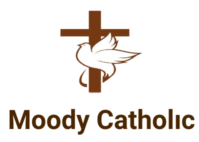Why Catholics Make the Sign of the Cross
The Sign of the Cross is a practice deeply ingrained in Catholic tradition and holds significant spiritual meaning. This gesture, although simple, represents a profound symbol of faith, identity, and commitment for Catholics.
This blog post contains affiliate links. When you click on a link on this page and make a purchase I may earn a small commission, at no additional cost to you. Thank you for your support.
Historical Origins
The Sign of the Cross has its origins in early Christianity. It is believed to have been practiced by Christians as early as the 2nd century.
The early Christian theologian Tertullian wrote, “In all our travels and movements, in all our coming in and going out, in putting on our shoes, at the bath, at the table, in lighting our candles, in lying down, in sitting down, whatever employment occupies us, we mark our foreheads with the sign of the cross.”
The Gesture and Its Meaning
The gesture involves touching the forehead, chest, and both shoulders while invoking the Holy Trinity: “In the name of the Father, and of the Son, and of the Holy Spirit. Amen.”
Forehead: Represents our mind and thoughts.
Chest: Symbolizes our heart and desires.
Shoulders: Signify our strength and actions.
This act of crossing oneself is a physical prayer, a reminder of Christ’s sacrifice on the cross and a public affirmation of faith.
Spiritual Significance
Affirmation of Faith: The Sign of the Cross is a proclamation of belief in the Holy Trinity. By making this gesture, Catholics express their acceptance of God’s presence in their lives.
Protection and Blessing: Historically, the Sign of the Cross has been seen as a form of protection against evil. It acts as a call for God’s blessing and a safeguard against spiritual harm.
Reminder of Baptism: The gesture serves as a recall of the sacrament of Baptism, where the individual was marked with the cross and initiated into the Christian community.
Expression of Repentance and Humility: Making the Sign of the Cross can be an act of repentance, acknowledging one’s sins and seeking divine mercy.
Meditative and Focused Prayer: It helps to focus the mind and heart in prayer, centering the individual on Christ and His love.
When to Make the Sign of the Cross
The Sign of the Cross is made at various times during the day and in different contexts:
At the Beginning and End of Prayers: This practice sanctifies the time of prayer, reminding the individual of God’s presence.
During Liturgical Services: It is a common gesture during Mass and other church services.
Upon Entering or Leaving a Church: This action acknowledges the sacredness of the space and shows reverence for the presence of God.
In Times of Fear or Temptation: It acts as a shield and source of strength.
Conclusion
The Sign of the Cross is more than a mere ritualistic habit; it is a declaration of faith, an act of worship, and a powerful spiritual tool. Through this simple yet profound gesture, Catholics connect to the fundamental aspects of their faith, invoking the triune God and remembering Christ’s sacrifice.
It is a testament to the depth and richness of Catholic tradition, encapsulating the essence of Christian belief and devotion.
